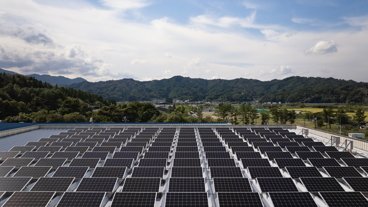Apple's savvy supply chain acumen has afforded it a two-year lead in a mounting 3D sensing arms race the company sparked with the introduction of Face ID on iPhone X, as reports claim major suppliers will not have crucial parts available for Android makers until 2019.
Citing talks with parts suppliers, Reuters estimates Android handset manufacturers like Huawei and Xiaomi will have to wait until 2019 for 3D sensing parts suppliers to reach production levels adequate for wide adoption.
That would give Apple, which debuted iPhone X last year, a substantial leg up over the competition.
Statements from Viavi Solutions Inc., Finisar Corp and Ams AG suggest production bottlenecks stand in the way of Android device makers fielding their own version of Apple's TrueDepth camera system and features like Face ID.
Viavi, which produces optical filters required for 3D sensing modules, is seeing constrained supply.
"It is going to take them a lot of time, the Android-based customers, to secure capacity throughout the whole supply chain," said Bill Ong, Viavi's senior director of investor relations. "We may have a potential introduction of a second handset maker into 3D sensing at the end of this calendar year. (But) the volumes would be very low. In 2019 you clearly will see at least two or more Android-based phones."
Ong declined to name the company, but said Viavi is in talks with "all" major smartphone manufacturers, the report said.
The largest roadblock standing in the way of a TrueDepth competitor is supply of vertical cavity surface emitting laser (VCSEL) modules. Sometimes referred to as structured light modules, VCSEL components make up the dot projector in Apple's 3D modeling apparatus, which also includes an infrared flood illuminator, and infrared camera and color cameras.
Apple secured a steady supply of VCSELs from partner manufacturer Finisar in a $390 million deal hammered out in December. Officially taken out of Apple's Advanced Manufacturing Fund, the infusion allowed Finisar to acquire a 700,000-square foot manufacturing plant in Sherman, Texas, which will pump out VCSEL supply for the iPhone maker.
In a statement last year, Apple said the investment will allow Finisar to "exponentially increase its R&D spending and high-volume production."
"Each customer has their own adoption timeline and rollout plan, which we can't discuss, but we expect the market opportunity for VCSEL technology to increase substantially in 2019," Craig Thompson, vice president of new markets at Finisar, told Reuters.
Other manufacturers build VCSEL modules, though production bottlenecks have hampered availability.
Lumentum, which was at one point pegged to deliver parts for iPhone X, is thought to have hit a snag last year that prompted Apple's Finisar deal. The firm in a recent earnings call said it is ramping up VCSEL and edge-emitting laser production for the first half of fiscal 2019, according to the report.
VCSEL producer Ams is also expecting capacity available for mass production in 2019.
However, by the time Android handset producers get their hands on suitable 3D sensing components, Apple will be well into its second year with the technology. Two years gives the Cupertino tech company a large window to build out TrueDepth, and perhaps other VCSEL-based camera hardware, with rumors already pointing to an expansion into iPad.
 Mikey Campbell
Mikey Campbell

-m.jpg)






 Andrew O'Hara
Andrew O'Hara
 Wesley Hilliard
Wesley Hilliard

 Malcolm Owen
Malcolm Owen
 Marko Zivkovic
Marko Zivkovic

 Chip Loder
Chip Loder
 Christine McKee
Christine McKee



-m.jpg)




46 Comments
By the looks of the Galaxy S9 it seems like a 3-4 year lead.
From an Android POV this is of course not true. Already now they are able to copy, err, invent something even better than Animoji, they have some cool face recognition stuff that almost lets them trust really secure stuff, such as paying. And latest next year they will have caught up with something that claims to be much better than anything on iOS. Oh, and eventually, years later they get it actually to work it silently abandon it.
I mean for the most parts Appple get the maturity right before releasing (noteworthy exceptions come of course to mind), but one thing I totally despise are systematically throwing half baked features at the wall of customers hoping that something sticks. This is so.... brainless.
So the VCSEL modules are manufactured in the US, shipped to China for assembly and then shipped back as a completed product.
If Apple worked towards automating the iPhone assembly, would it then be able to move that to the US as well? Besides assembly, what else is Apple dependant on China for? I think there is something to do with rare minerals as well, right?
Last year Huawei was doing live demos of 3D sensing systems with ten times the resolution of FaceID. Huawei has been working with Finisar for years and have even collaborated on product development in the past.
The iPhone X is the only Apple phone with FaceID at present and demand for it will not sky rocket in the coming months. The units necessary for some Android destined 3D sensing equipment probably already exist.
There is the possibility of industry wide supply constraints but I imagine that some Android manufacturers should be able to get models out without too many problems.
The Huawei P20 series will be announced next week and will be a reference point. If it ships without the Point Cloud Depth setup, it will lend strength to this rumour. If it ships with it, some manufacturers may be covered while others are locked out for a time.
Just a few days to wait.